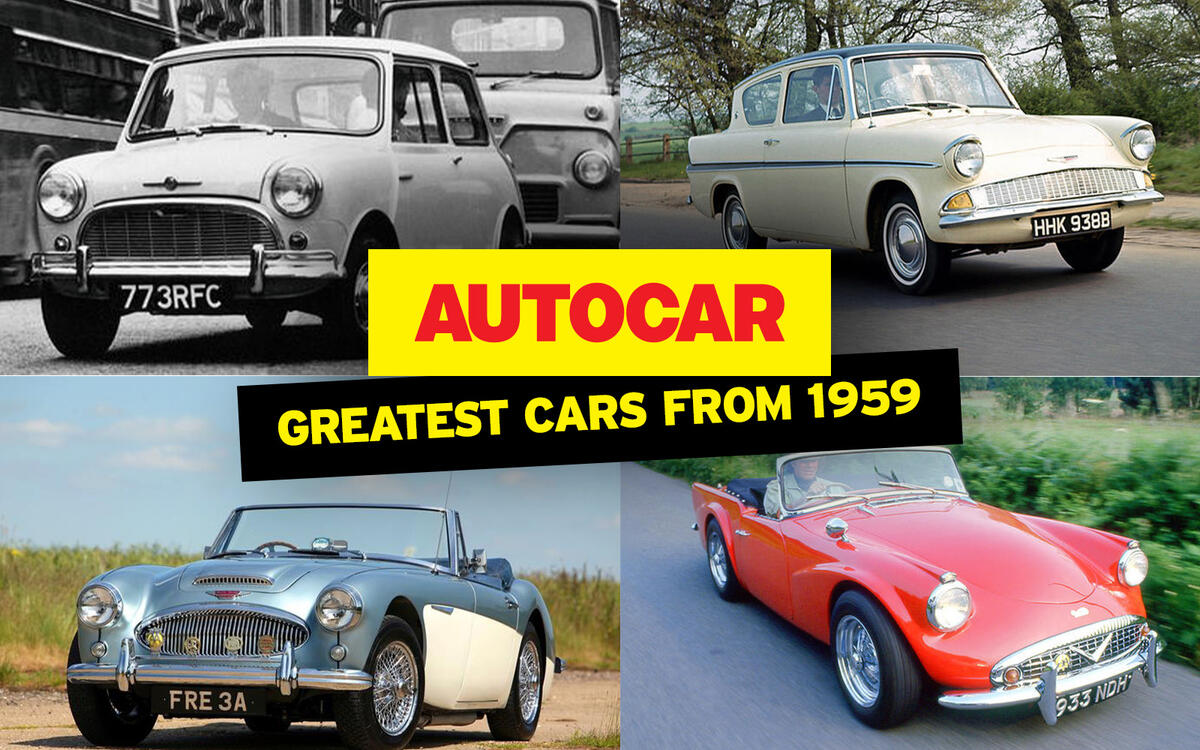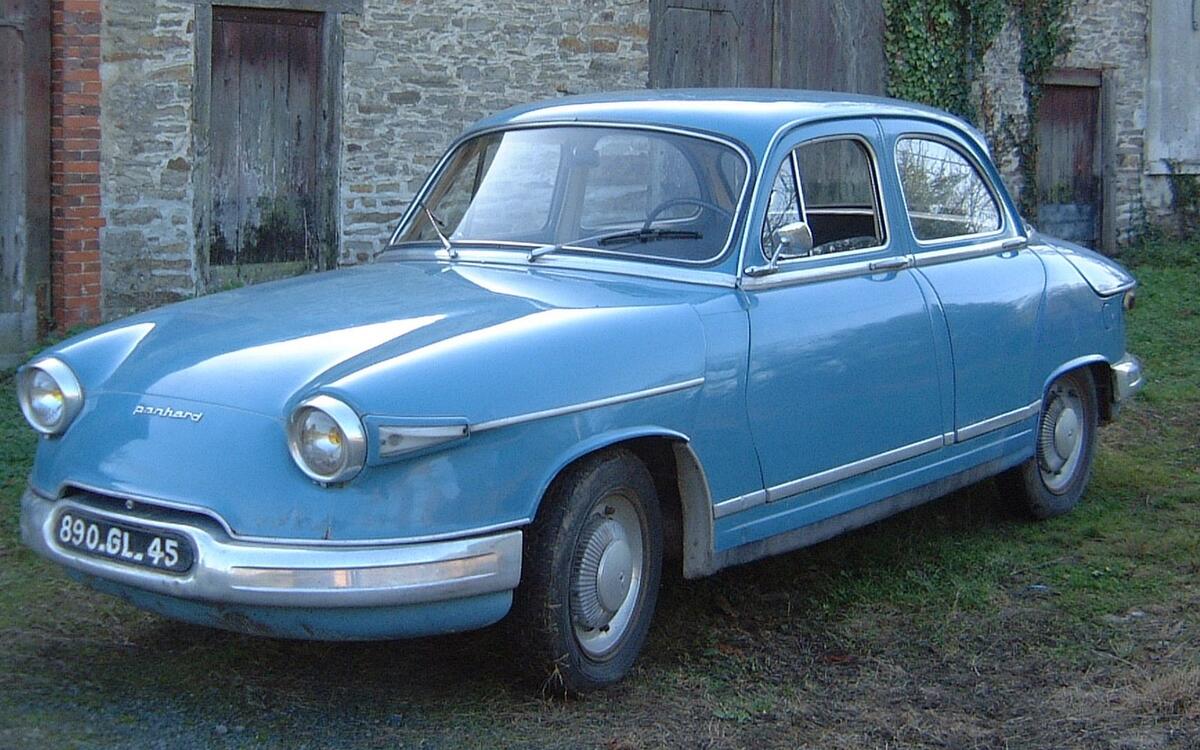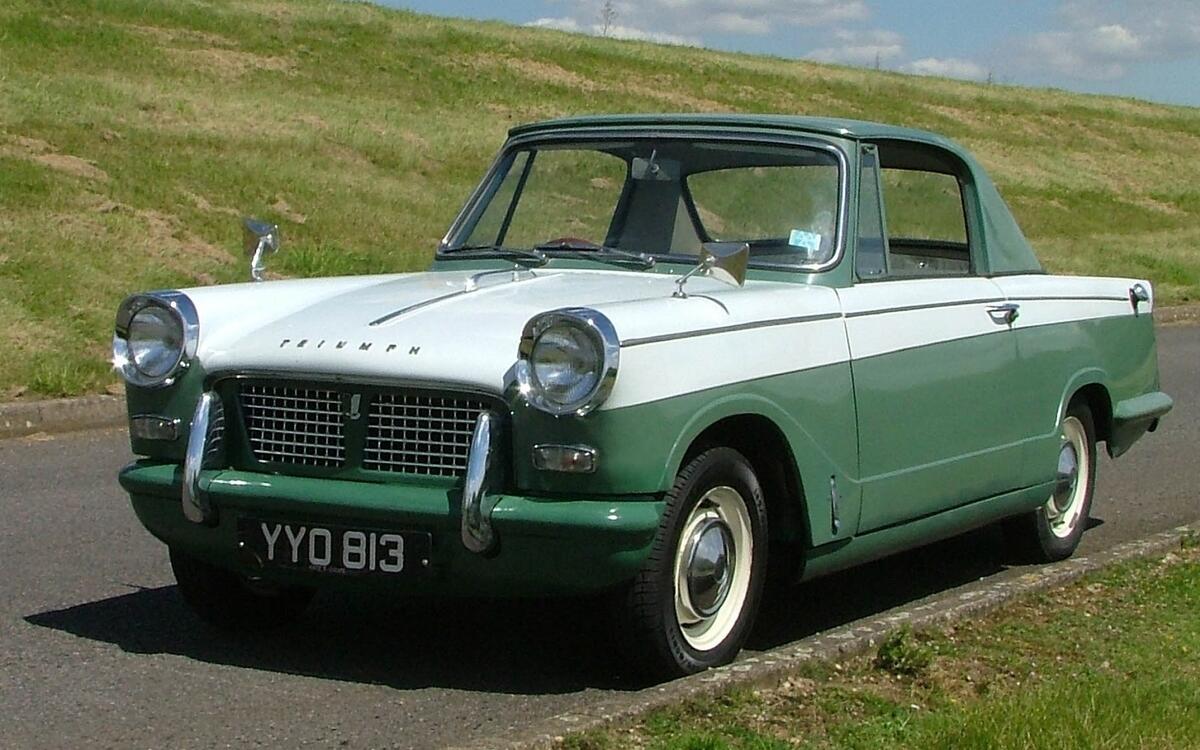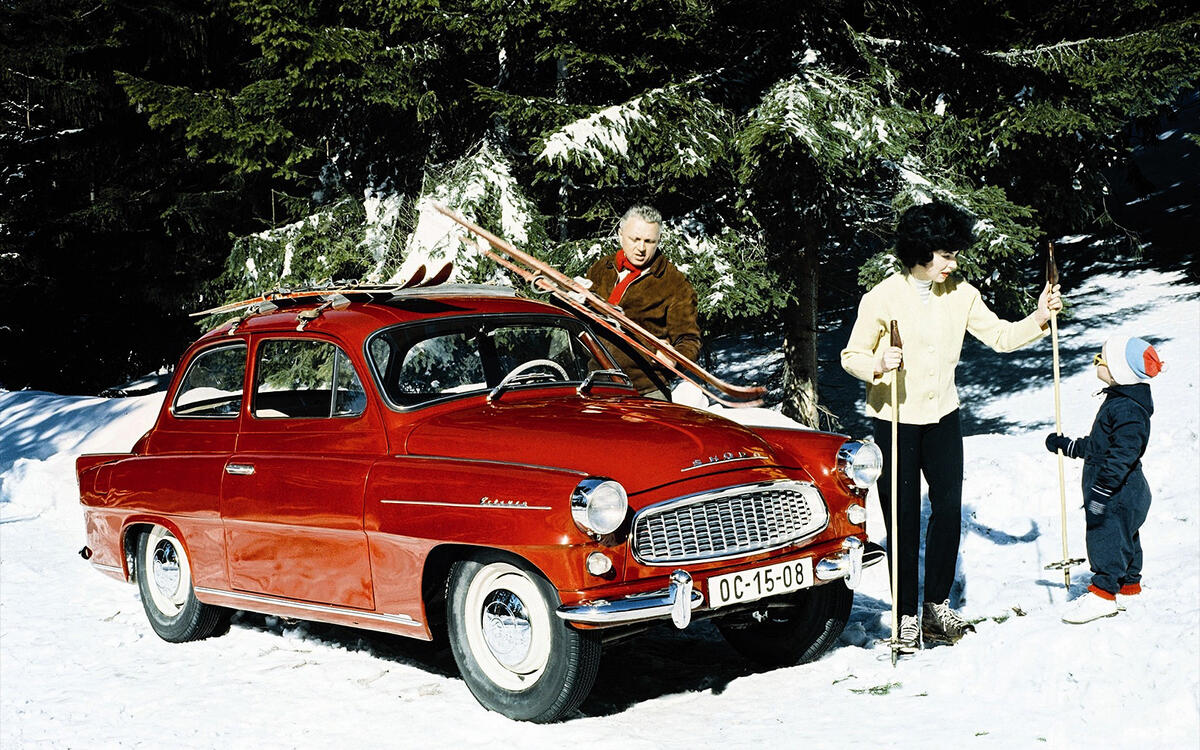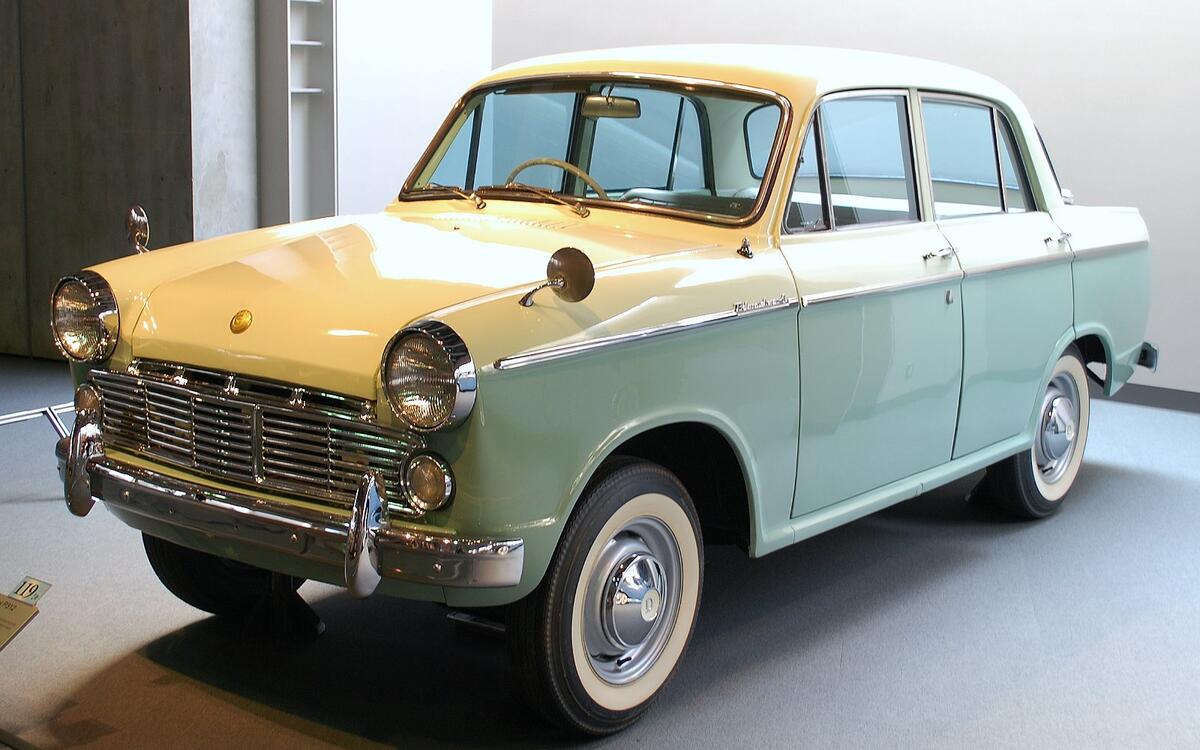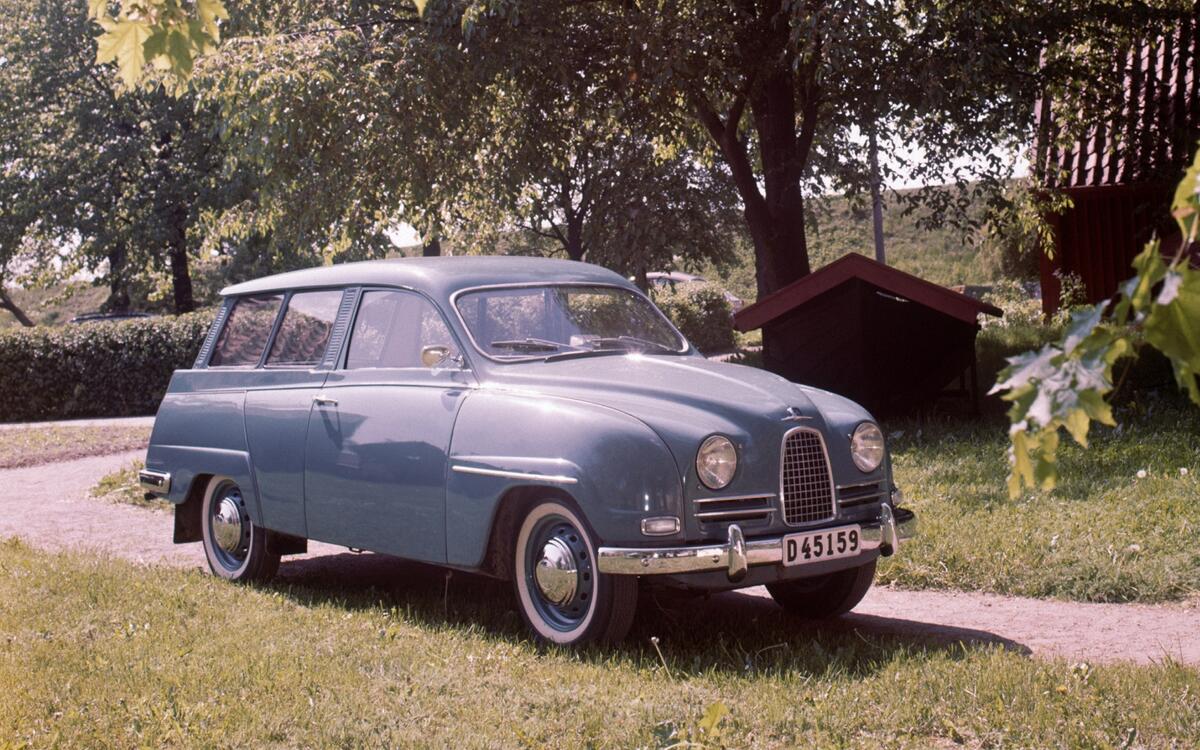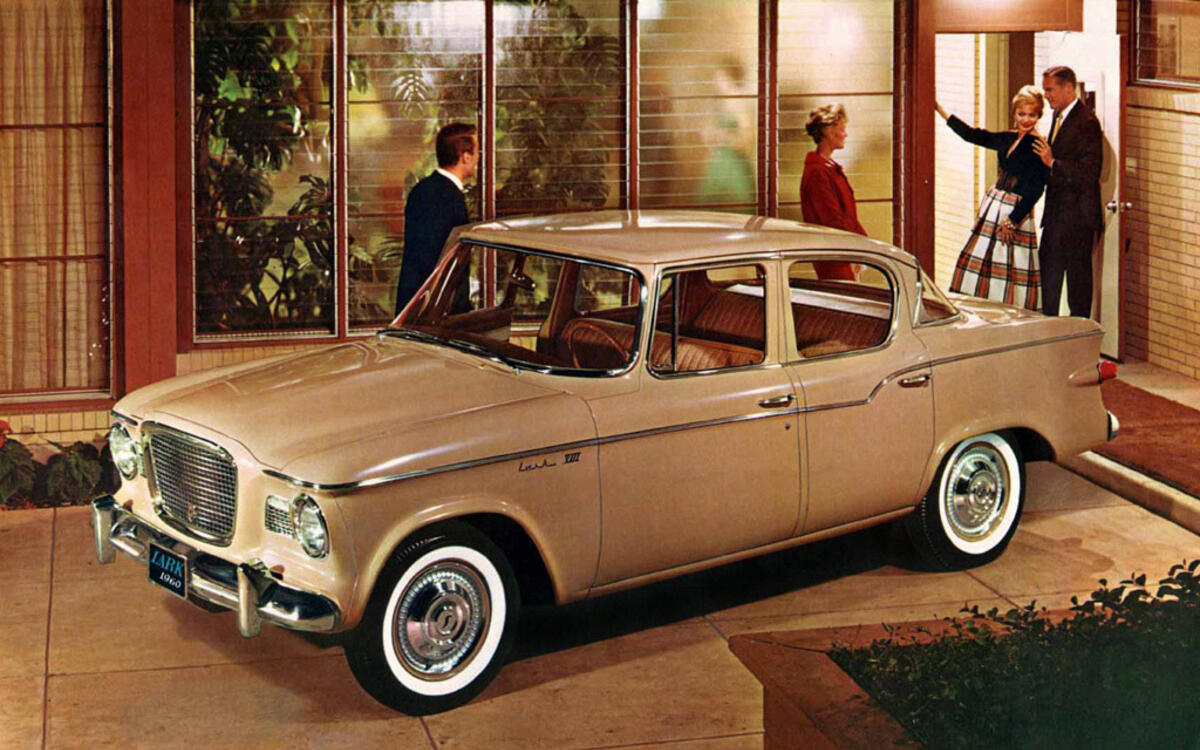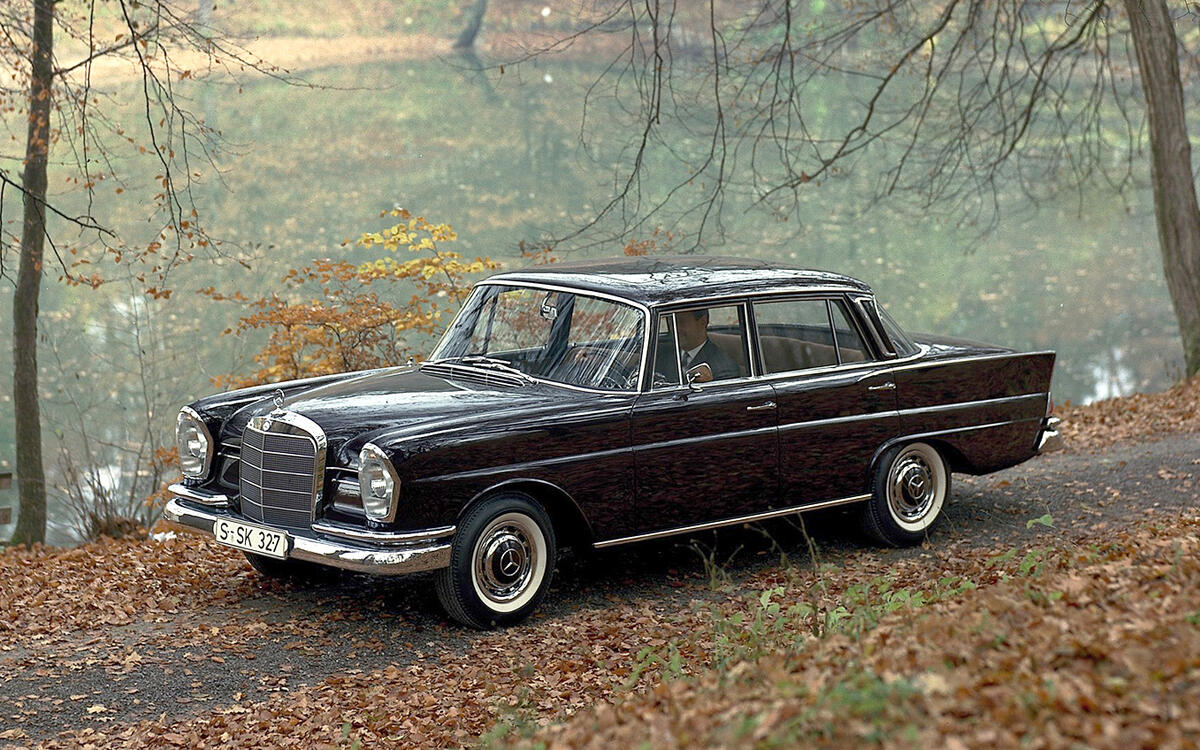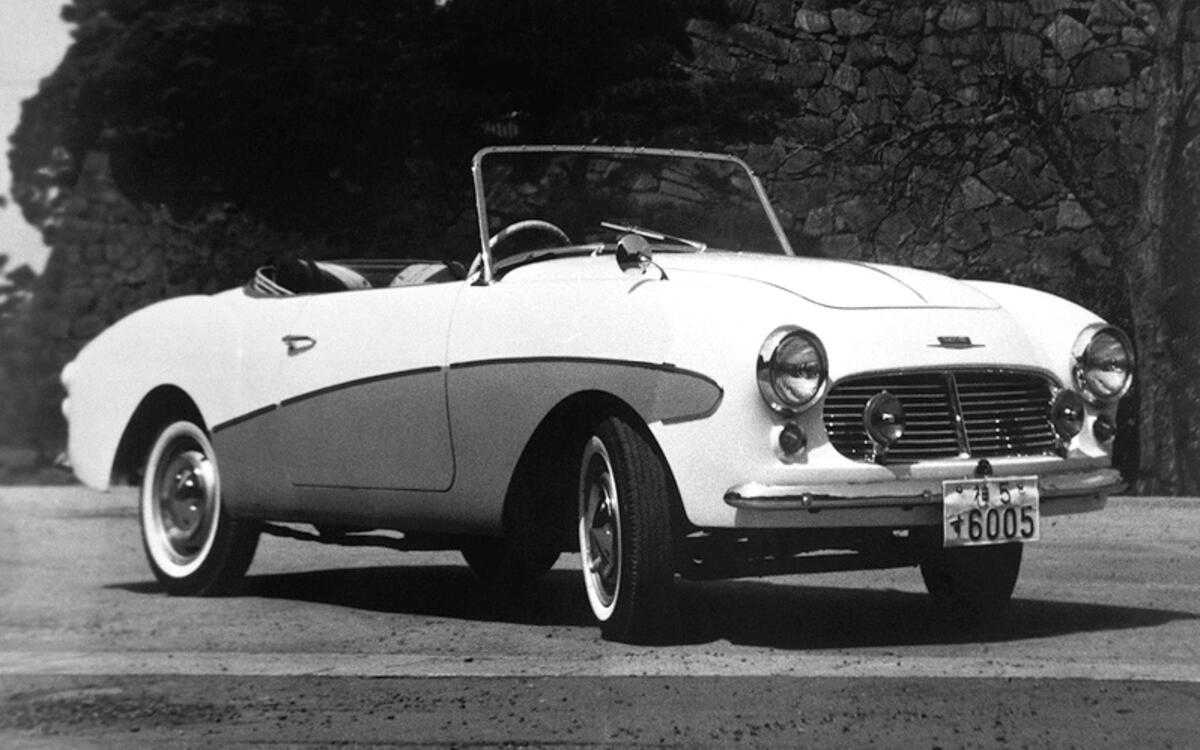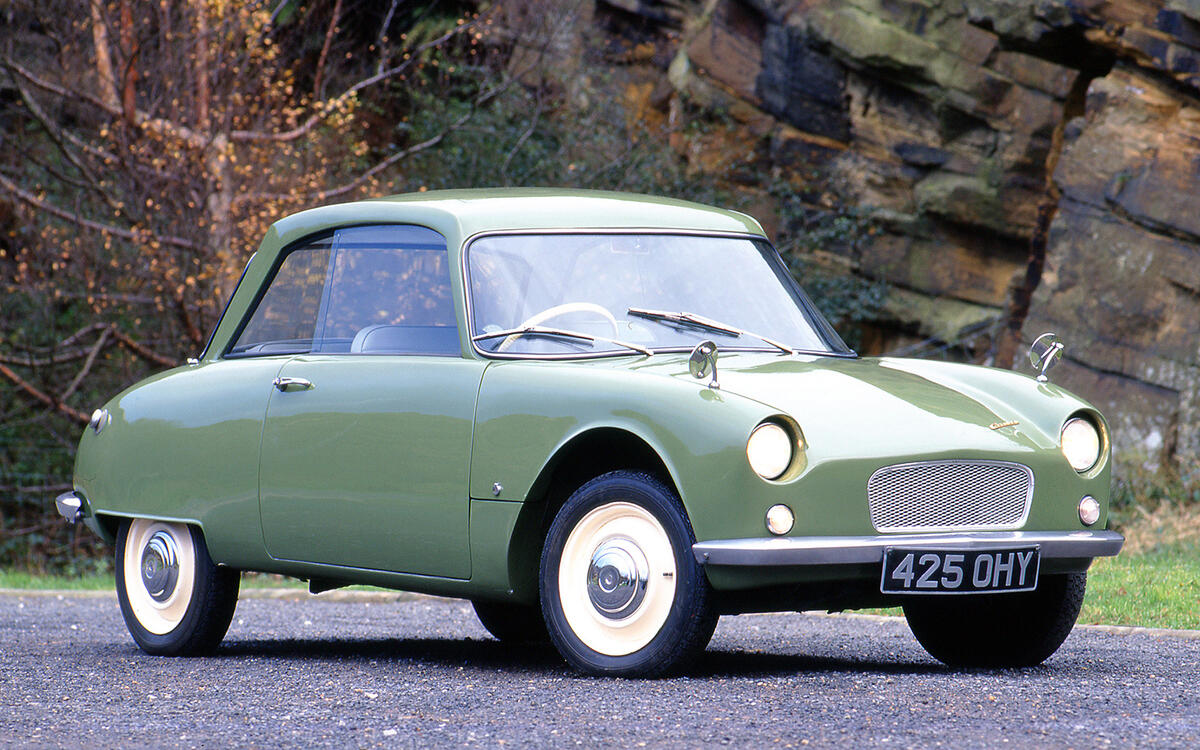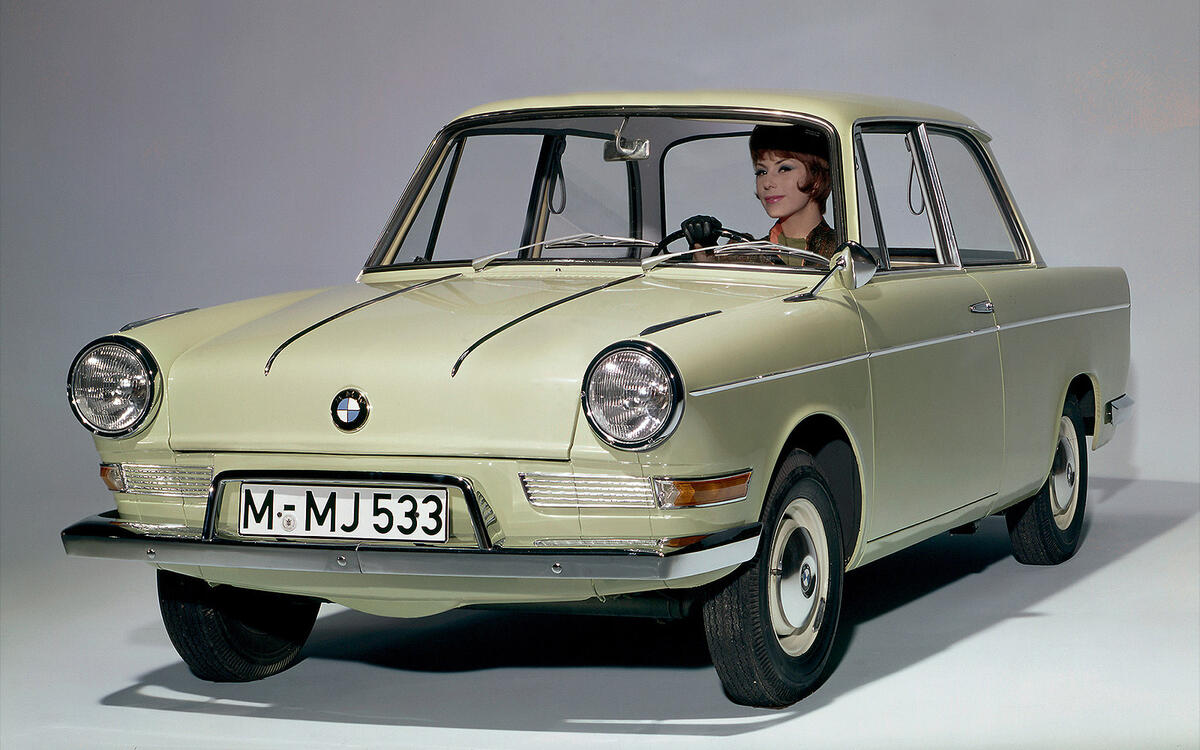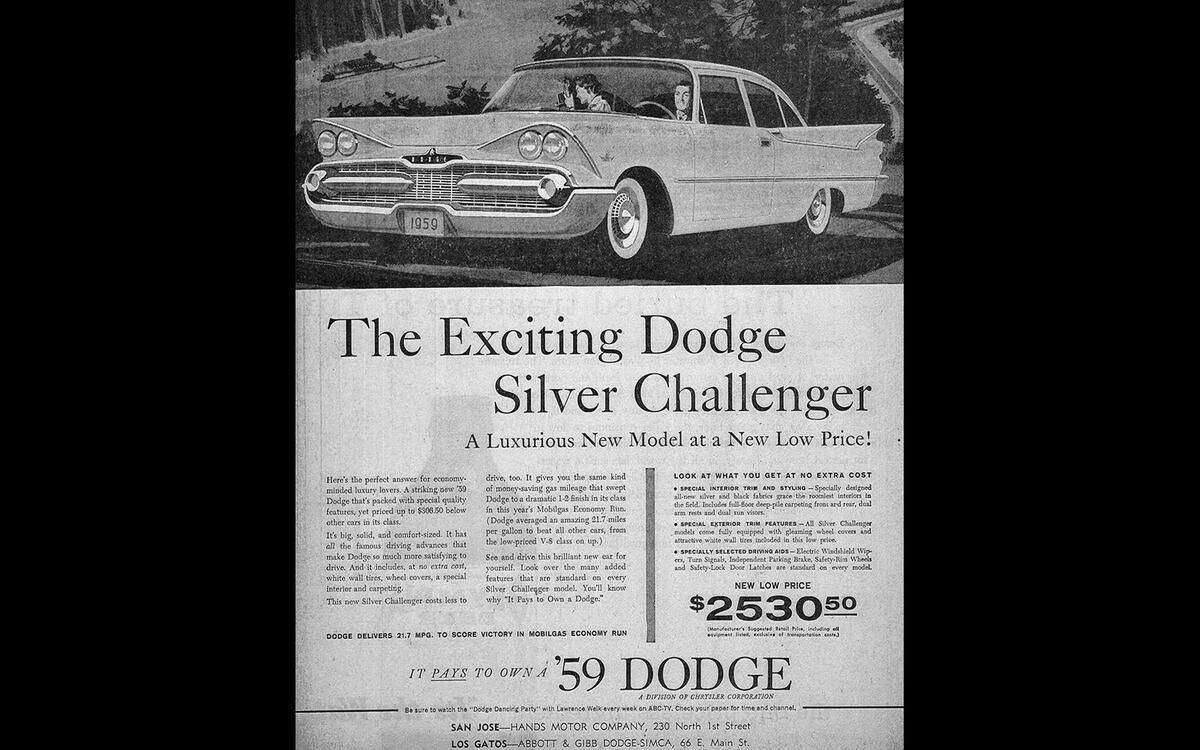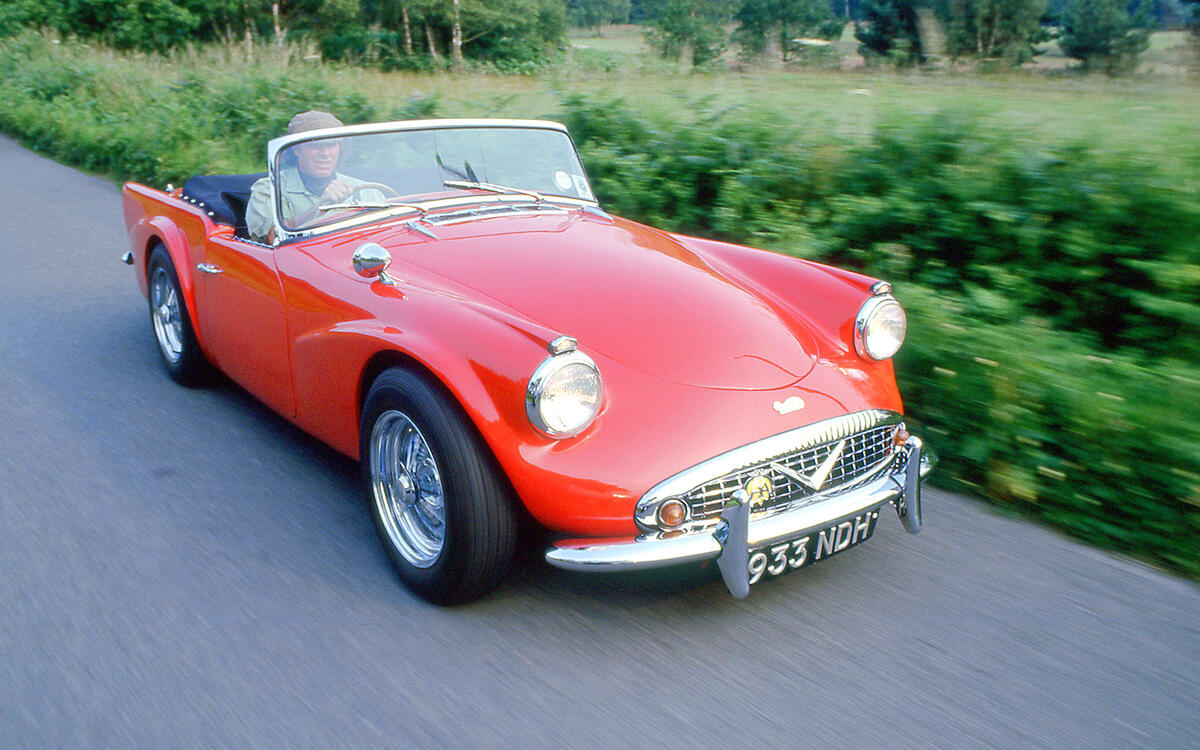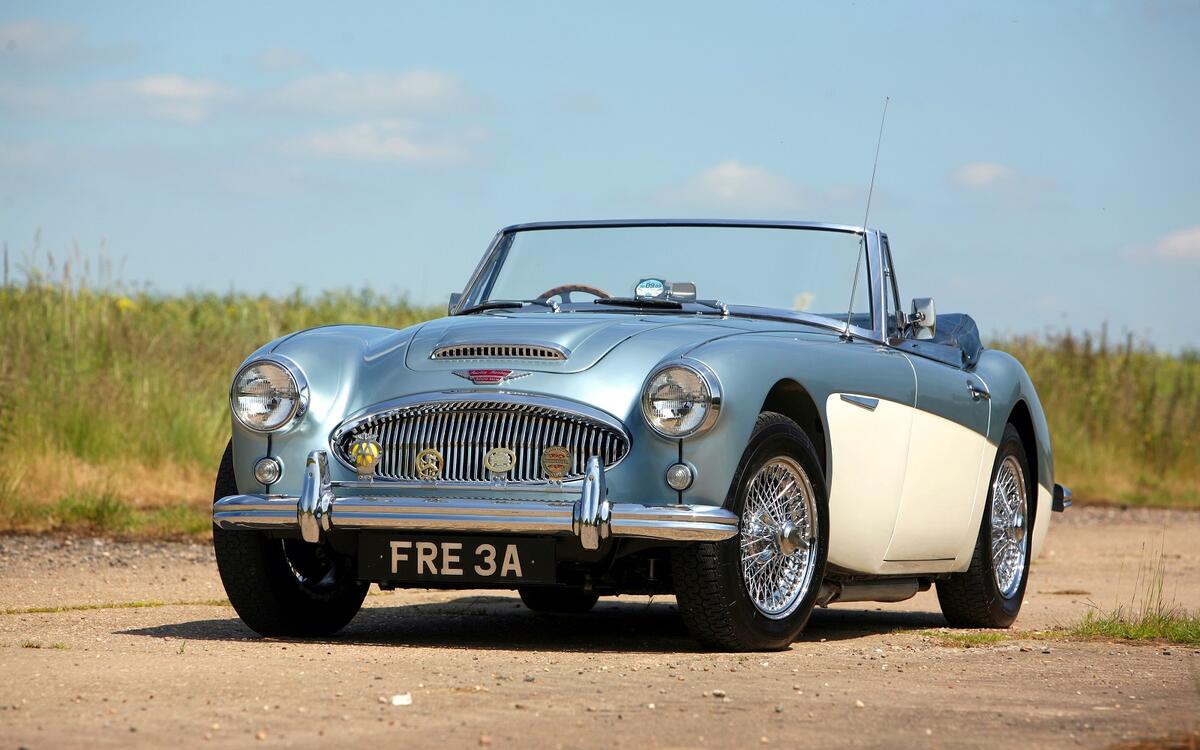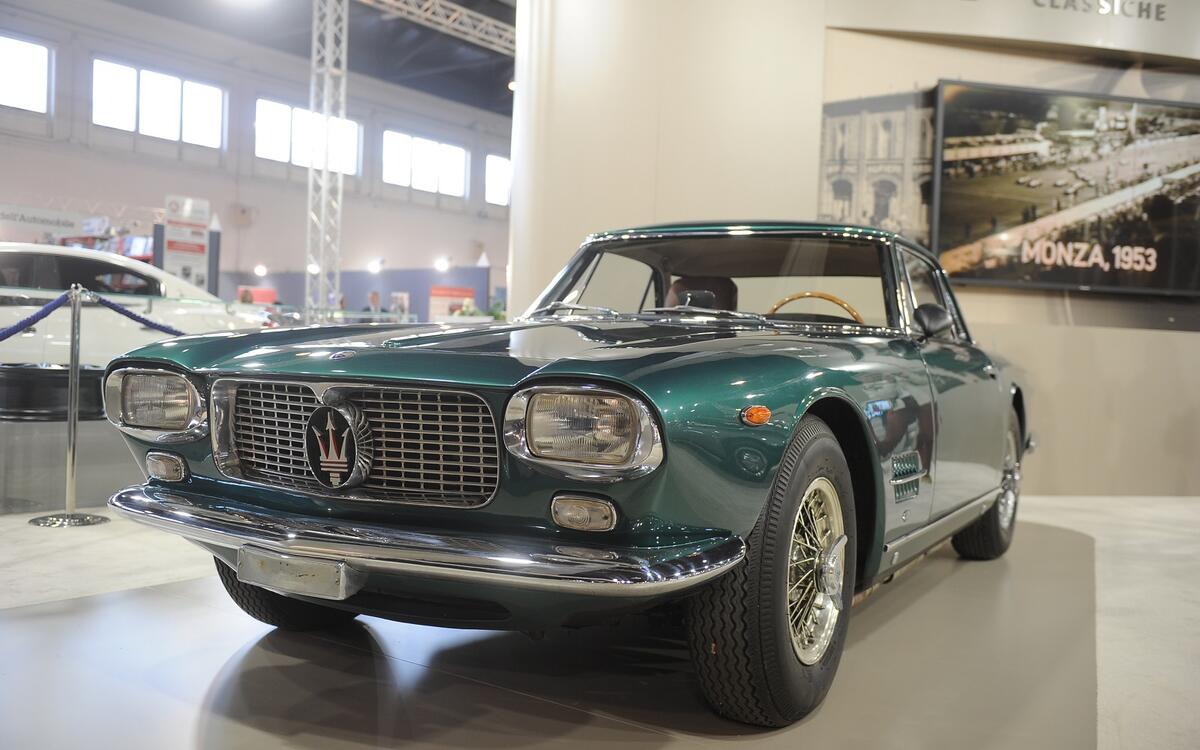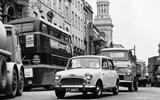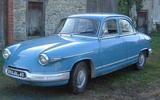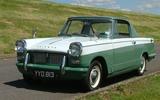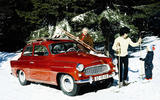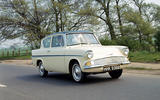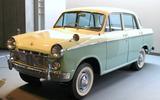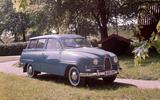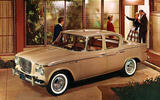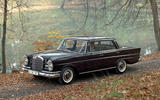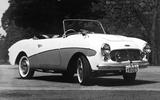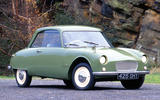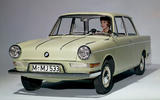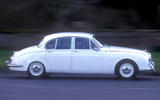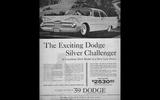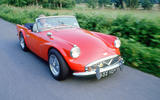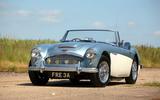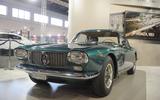 Slide of
Slide of
A great many cars made their debut in 1959.
There was something special in the air that produced so many designs that have become emblematic of the era.
As the world shook off the hangover from the Second World War, design and innovation were booming in the car industry.
From family models to sports cars, the car world hadn’t up to that point seen anything like the proliferation of new models and ideas that 1959 witnessed.
Here, we look at some of the best cars from 1959 - a truly landmark year for the motoring industry...
 Slide of
Slide of
Mini
Cars don’t get more important or iconic than the original Mini, which set the template for small cars that we still have today.
With its transversely-mounted engine over the front wheels and the gearbox sharing the same oil, it made for a compact unit that maximised cabin space within the Mini’s 3054 mm (120in) overall length.
Light weight meant it also handled well, even if we had to wait for keener performance from the Cooper models.
Like so many revolutionary designs, the Mini was the result of one man’s bold vision and that was Alec Issigonis, who had also come up with the Morris Minor.
However, it should be remembered the Mini was also the result of British Motor Corporation boss Leonard Lord’s extreme dislike of 'bubble' microcars.
Lord wanted an alternative to these cars that had prospered after fuel shortages in the UK caused by the 1956 Suez Crisis. The result was a car that lasted in production for 41 years, with 5.4 million examples built.
 Slide of
Slide of
Panhard PL 17
Panhard may have been a small company but it never lacked ambition and the PL17 encapsulated that perfectly.
It was a more streamlined version of the Dyna and used an all-steel construction to make it more affordable than the aluminium Dyna.
Front-wheel drive and a flat-twin engine were reminiscent of the Citroen 2CV, but the PL17’s motor started off as an 851cc unit.
That later shrank to 848cc to duck under France’s tax categories at the time.
With 50 hp and weighing in at 805kg (1771 lb), this streamlined four-door could reach up to 90mph and 130,000 mostly French buyers reckoned it worth the money until it gave way to the 24CT in the 1964.
 Slide of
Slide of
Triumph Herald
Sleek styling by Michelotti set the Triumph Herald apart from rivals such as the Ford Anglia and Mini.
However, underneath that skin was a separate chassis used out of necessity and limited budget. It didn’t stop the Herald finding plenty of eager customers and 951,289 of all types were sold when production ended in 1971.
There were also a further 51,000 Vitesse models with a six-cylinder engine.
The first Herald on sale was the Coupe, followed a couple of weeks later by the 4-door and convertible.
An estate model arrived in 1961 complete with larger 1200 engine, while 1967 saw the restyled 13/60 with its bigger 1.3-liter motor.
All stuck with the original transverse leaf rear spring suspension that could catch out the unwary, but the Herald also proved itself an able rally car with works entries and a class win in the 1960 RAC Rally.
 Slide of
Slide of
Skoda Octavia
Skoda named its new for 1959 model Octavia simply because it was the eighth model line to come from its Mladá Boleslav factory.
Like the Octavia we have today, the original Octavia was a well-made family car and keenly priced. There was a choice of two- or four-door models and they gained a reputation for good quality and reliability.
Starting out with a 1.1-litre engine, the Octavia benefitted from a 51 hp 1.2-litre unit in the Super and TS models.
Basic versions for its domestic market were sparsely equipped, but most export cars gained a heater, screen washers and reclining front seats. During its five-year life, 227,258 Octavias were produced.
 Slide of
Slide of
Ford Anglia
The 105E Anglia really was the shock of the new from Ford when it arrived in 1959.
Gone were the roly-poly roundness of the previous generation and in came razor sharp lines, fins and a reverse-angle back window. This was a touch of the American dream in a compact size.
Like so many Fords before and after it, the Anglia quickly became a darling of the tuning world thanks to its lively 997cc four-cylinder engine and adroit handling.
It gave the Mini a tough time on track and rally stages, helping to boost its profile and sales to more than 1 million by the time it bowed out in 1967 to make way for the Escort.
In recent years it has attracted new fame as a star in the Harry Potter movies.
 Slide of
Slide of
Datsun Bluebird
The 1959 Datsun Bluebird was not the first in this family line, but it was an all-new model and was the first to be sold in significant numbers in Europe.
So, it led the way for the Japanese revolution that took place in the 1970s. To do this, Datsun used the simple formula of building cars that were more rugged and reliable than their Euro counterparts.
A 1.0-litre four-cylinder engine was joined by a 1.2-litre unit in 1960 and Datsun offered the car as a sedan or estate, the latter with plenty of luggage room for its compact size.
Reflecting the period of its production, the Bluebird was also marketed to women drivers with a ‘Fancy Deluxe’ trim that included curtains, vanity mirror and high heel shoe holder under the dash.
 Slide of
Slide of
Saab 95
Unveiled in 1959, the Saab 95 was unlike anything else on the road, so normal by Saab standards.
Its teardrop shape was inspired by the firm’s aeronautical background, while the sturdy construction ensured it coped with Sweden’s winters and also made it an able rally car.
Power came from a three-cylinder inline two-stroke engine with 39 hp. Not much even by the measure of the late 1950s, but the 95 only weighed 803kg (1767 lb) and the motor loved to rev.
Add in excellent handling, which required some learning for those not used to the Saab’s quirks, and the 95 was formidably quick from A to B.
By 1968 and its replacement by the Ford V4-powered model, 253,305 of these two-stroke marvels had been sold.
 Slide of
Slide of
Studebaker Lark
At a time when cars in the US were getting ever bigger, the Studebaker Lark was a refreshingly clean-lined compact machine.
Offered in two- and four-door sedan, coupe, convertible and station wagon estate forms, it was a broad church for those who wanted an affordable, dependable machine.
That didn’t have to mean dull, as you could trade up from the entry-point 170cu in (2.8-liter) inline six to a 259cu in (4.2-liter) V8.
There was also a taxi version with an extra 4.5-inch (110mm) of rear legroom courtesy of a lengthened wheelbase.
The last Lark left the South Bend, Indiana production line in 1966, but some Larks were still assembled at the Ilin Plant in Haifa, Israel in 1967 for the local market.
 Slide of
Slide of
Mercedes W111 range
The W111 range, and the wide variety of model designations that stem from it, is where Mercedes shook off the old and started on the path to the cars we know today.
Always restrained in their looks, the W111 cars also carried over four- and six-cylinder engines from previous generation, but innovations such as fuel injection set the German cars apart from most rivals.
As well as the upright sedan models, Mercedes offered its large coupe and convertible versions with styling by Paul Bracq.
These cars are now hugely desirable classics that can still be used daily - an entertaining, if sluggish, way to travel.
 Slide of
Slide of
Datsun Sports
The Datsun Sports, or Fairlady as it was sold in Japan, founded a dynasty that continues in today’s GT-R and 370Z models.
Those first Sports didn’t quite live up to their name with only 38 hp from a 1.0-liter engine.
However, Datsun was nothing if not quick to react to public demand and updated the car in 1960 with a 1.2-litre 48 hp motor.
For 1963, the Fairlady 1500 was launched and finally Datsun had a car to take on the MGB and Triumph Spitfire in the all-important US market that was mad for two-seat sports cars.
This version had 86 hp and also offered an unusual third seat set at 90-degrees behind the front pair.
By 1965, this seating layout was ditched and in 1967 saw a zesty 2.0-litre engine with 135 hp and five-speed manual gearbox arrive, putting the likes of the MGB in the technical shade.
 Slide of
Slide of
Citroën Bijou
Citroën’s 2CV has been the base for many specials over the years, but one of the first was by the company’s own hand in the shape of the Bijou.
Conceived to win over British customers to the Tin Snail ethos, the Bijou was an attempt at a sleeker coupe and was constructed at the company’s Slough factory.
It was styled by Peter Kirwan-Taylor who was also responsible for the delicate, all-glassfibre Lotus Elite.
A glassfibre body was advanced for the time, but it was also heavier than the standard 2CV’s, so performance from the 425cc flat-twin engine was leisurely to say the least.
It was also less practical and more expensive than a 2CV, which explains why only 211 were ever made. The flipside is Bijous are now highly prized in the Citroën world.
 Slide of
Slide of
BMW 700
The 700 is the car that saved BMW and set it on the path to where the German firm is today.
While models like the Isetta and 507 grabbed headlines, there wasn’t much butter on the bread of the mainstream models until the 700 arrived with its flat-twin, rear-mounted engine.
It made for a stylish, practical car offered in sedan, coupe and convertible styles, setting the tone for all small BMWs to follow.
While the engine layout wasn’t carried forward, the 700’s looks influenced the vital Neue Klasse 1500 and 1800 models that arrived in 1962.
By then, the 700 had put BMW on a firm financial footing and went on to sell 181,411 of all types.
 Slide of
Slide of
Jaguar Mk2
The 1960s simply wouldn’t have been as glamorous without the Jaguar Mk2, yet it was launched in 1959 when Britain still seemed a very buttoned-up, strait-laced world.
Jaguar's response was this XK-powered model that offered a bigger glass area and wider rear track than the previous Mk1 for improved handling.
Everyone from racing drivers to bank robbers made full use of the Mk2’s strong performance and dynamic ability, while many more enjoyed its quiet comfort.
In all, 83,976 Mk2s left the Browns Lane factory and, perhaps even more than the E-type that followed, cemented Jaguar’s reputation for sporting cars with a raffish sense of style.
 Slide of
Slide of
Dodge Silver Challenger
The Challenger name plate will forever be linked to Dodge’s muscle car of 1970, but the name was first seen in 1959 on the Silver Challenger.
Like its more famous offspring, the Silver Challenger was a two-door model aimed at offering a sportier option for customers.
It came with plenty of extras, including whitewall tyres, wheel trims and black and silver cabin upholstery. This was all for only a small premium over the base Coronet on which it was based.
However, performance was not a concern and the Silver Challenger made do with a 135bhp 230cu in (3.8-litre) straight-six or 326cu in (5.3-litre) V8 with a lazy 255bhp.
A three-speed manual ’box was standard or you could have the optional two-speed self-shifter. Sadly despite keen pricing the Silver Challenger was not a huge success and was quietly dropped at the end of 1959.
 Slide of
Slide of
Daimler SP250
It’s easy to scoff at the Daimler SP250 with the benefit of hindsight, but it followed a line of low volume sports cars from the British car maker.
Originally called the SP250 Dart, the latter part of the name was dropped after complaints from Chrysler. Other troubles for the car included the first generation’s tricky handling and the propensity for its glassfibre body to crack.
Daimler solved these issues with the later B specification version from April 1961, but by then the firm had been taken over by Jaguar.
The SP250 was viewed as a rival to Jag’s new E-type and was killed off in 1964 after only 2650 SPs had been built. However, the jewel-like 2.5-litre V8 engine lived on in the V8 250 based on the Jaguar Mk2.
 Slide of
Slide of
Austin-Healey 3000
Quickly known as the ‘Big Healey’, the Austin-Healey 3000 was a cut above MG and Triumph sports cars.
A lusty 2.9-litre six-cylinder engine provided 115bhp to begin with, later growing to 144bhp in the final Mk3 model, so performance was always a strong point.
So was the Healey’s rugged chassis, which soon made it a star of rallying, even if its low-slung design necessitated an exhaust that broiled the co-driver.
Unusually, the 3000 was offered as a two and four-seater to broaden its appeal.
It also grew steadily more luxurious with each update and the Mk3 sported a walnut dash and wind-up windows.
Today, these handsome sports cars are sought-after classics that can still hold their own in modern traffic.
 Slide of
Slide of
Maserati 5000
The list of owners tells you all need to know about the Maserati 5000 GT.
When new, they included the Aga Khan, Fiat mogul Gianni Agnelli and businessman and race car driver Briggs Cunningham.
In other words, you couldn’t be merely rich and buy a 5000 GT, you needed a special place in Maserati’s customer contacts to own this rarefied machine.
The idea came from the Aga Khan, who wanted a 3500 GT but with the 450 S racing car engine.
Maserati obliged and created the 5000 GT with a refined 4.9-litre V8 that made the car capable of 170mph.
Fuel injection was added in 1961, along with a five-speed gearbox, but the lucky 34 new owners of the 5000 GT could have almost whatever they asked for.
Join us for a blast to the past as we recall the best new cars of 1959
Advertisement


